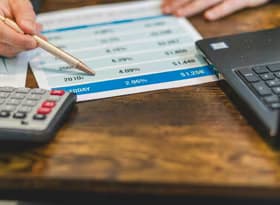Economic forecasting’s spectacular failure around COVID-19
This time last year, the government closed the borders and then sent New Zealand into a lockdown that saw life virtually come to a halt. Amid this disruption, economists rapidly slashed their forecasts for GDP and employment. But economic activity has bounced back from lockdown largely unscathed, and the unemployment rate has only lifted from 4.2% to 4.9%. Why did forecasters get it so wrong?
The successful public health response
More than any other time in my forecasting experience, 2020 was characterised by an immense amount of uncertainty, most of which came from “non-economic” factors. How contagious and deadly was the virus? How long would lockdown last? Would there need to be ongoing or repeated restrictions on people’s movements? In the early stages of the pandemic, the best pointer we had was the unfolding chaos in the likes of Italy and Spain.
Our government’s decision to pursue a strategy of elimination, rather than suppression, has been arguably more successful than anyone might have hoped. We’ve been helped by our geographic isolation and spread-out population, and there’s been a share of good luck along the way. Nevertheless, our ability to go about our lives almost as normal lies in stark contrast to the disruption still affecting countries such as the UK or Italy. Both those economies are expected to still be smaller in 2022 than they were in 2019.
Splashing the government’s cash
It turns out that, if you throw enough money at a problem, it’s no longer a problem. The $62b COVID-19 Response and Recovery Fund represented government spending on an unprecedented scale, dwarfing the fiscal response to the Global Financial Crisis and 2011 Christchurch earthquake.
Among the government’s initiatives, the immediate wage subsidy pay-out covering 12 weeks was instrumental in shielding the economy from the effects of lockdown. In hindsight, the amount of money paid out was probably on the generous side, given the limited lockdown period and the immediate bounce back in demand in subsequent weeks. But without this injection into their cashflow, many businesses that were unable to operate for 5-7 weeks would have been illiquid, resulting in substantial job losses.
Even with this government assistance in place, there was an increase of almost 46,000 people on the Jobseeker Support benefit between mid-March and early June last year, a 32% rise. Tourism-related job losses were dominant, but there were plenty of headlines from less directly affected industries such as construction, retail, and media. These job losses would have been just the tip of the iceberg if government assistance had not been forthcoming, or if demand across the economy had failed to recover so strongly in the second half of 2020.
Consumers find other stuff to spend on
Because people mostly stayed in work, they had the confidence after lockdown to go out and spend again, rather than saving the money in case their financial position deteriorated. The Reserve Bank’s substantial easing in monetary conditions also freed up more cash in household budgets for discretionary spending.
Furthermore, Kiwis’ inability to spend their usual $5.4b on overseas travel and holidays had unexpectedly large flow-on effects for parts of the domestic economy. Our early modelling suggested that some of this spending would be shifted to domestic travel or other areas such as housing. But the amount of spill-over into home-related spending, construction activity, and the purchase of big-ticket items such as cars and boats, has been surprising.
Economic models are generally designed to cope with moderate shocks, not the complete removal of a whole part of the economy such as international travel. The more extreme the shock, the more likely it is that the usual relationships break down, meaning that normally reliable models no longer accurately predict changes in people’s behaviour.
Still difficulties to work through
It’s important to note that there are still some people and parts of the economy that are struggling. The economic outcomes of COVID-19 have been very uneven, with Māori and Pasifika, women, and young people being disproportionately affected. On a regional basis, areas normally reliant on international tourism remain under intense pressure, and job numbers in the travel, accommodation, and hospitality sectors continue to be squeezed.
Many businesses have shown an impressive ability to pivot their operations to fit with the changed economic environment. But until vaccines are rolled out and borders reopen, there will be a small part of the economy that cannot recover. As a result, most forecasters agree that growth over the coming year will be much harder to achieve than the bounce back we’ve seen to date.
Make of that what you will – the inaccuracy of economists’ predictions over the last 12 months means you could be forgiven for taking our forecasts for the next year with a sizable helping of salt!












